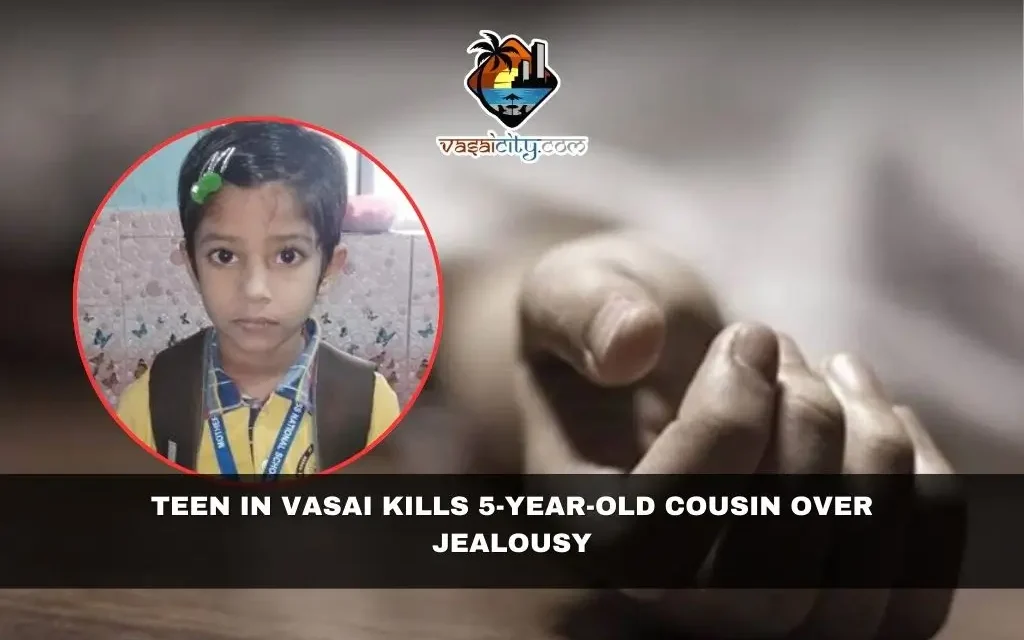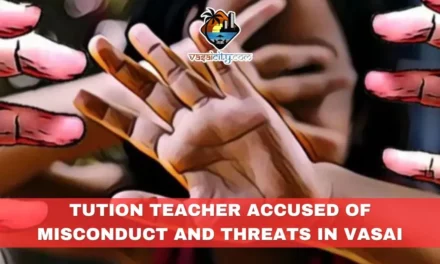In a quiet neighborhood of Vasai East, a horrifying incident has left a family shattered and a community reeling. A 13-year-old boy allegedly strangled his five-year-old cousin, Shidra Khatun, and crushed her head with a rock on a remote hilltop Saturday evening (March 1). The motive, police say, stemmed from jealousy—the boy felt overshadowed by the affection his younger cousin received from their family.
The Day That Ended in Tragedy
The day began like any other for Shidra Khatun, a cheerful kindergarten student from Shriram Nagar in Vasai East. Her father, Mohammad Salman Khan, dropped her home after school around noon before heading to work. By evening, Shidra was playing outside her house, a routine her parents never imagined would end in disaster.
When she didn’t return home by dusk, her family grew anxious. They scoured the neighborhood, knocking on doors and calling out her name. By 10 p.m., with no sign of Shidra, her parents turned to CCTV footage from nearby shops and their apartment complex. The footage revealed a chilling sight: their 13-year-old nephew, who lived next door, was seen leading Shidra away.
A Web of Lies Unravels
Confronted by the family, the teenager spun a false tale. He claimed he’d taken Shidra to a nearby hill to play but fled when two strangers kidnapped her, threatening him to stay silent. Panicked, the family rushed to the Vasai police station to report her abduction around 11:30 p.m.
Officers immediately questioned the boy, who stuck to his story. Skeptical, police asked him to lead them to the hill where the “kidnapping” occurred. During the search, officers combed the rugged terrain with flashlights until, at 3 a.m. Sunday, they discovered Shidra’s lifeless body near a rock. She had bruises around her neck—consistent with strangulation by small hands—and a severe head injury.
A Confession Under Pressure
Faced with evidence, the teen broke down during interrogation. He confessed to luring Shidra to the hill, strangling her, and bludgeoning her head with a stone. “He admitted he resented Shidra for being the family’s favorite,” a police officer told reporters. “He wanted all the attention for himself.”
The boy, whose identity remains protected under juvenile laws, was detained and will appear before the Juvenile Justice Board. Police are investigating whether premeditation or external factors drove the crime.
A Community in Shock
The Khatun family, still processing their loss, described Shidra as a “bundle of joy” who loved dancing and drawing. Neighbors recalled her laughter echoing in the apartment complex. “We never suspected the boy could do something so evil,” said a relative. “They played together often.”
Residents of Shriram Nagar expressed disbelief, struggling to reconcile the gentle boy they knew with the brutality of the crime. “He was quiet but never violent,” said a neighbor. “This is unimaginable.”
Legal and Psychological Questions
The case has reignited debates about juvenile crime in India. Under the Juvenile Justice Act, minors aged 16–18 accused of heinous crimes can be tried as adults, but the accused here is only 13. Legal experts say he’ll likely face rehabilitation, not prison.
Child psychologists stress the need to address jealousy and emotional neglect in families. Dr. Anjali Deshmukh, a Mumbai-based therapist, notes, “Children often act out when they feel invisible. This tragedy underscores the importance of nurturing emotional well-being in kids, even when they seem ‘fine.’”
The Aftermath
Shidra’s funeral was held Sunday, attended by grieving relatives and neighbors. Meanwhile, the accused boy’s family has retreated from public view, reportedly seeking counseling. Police are reviewing his school records and social behavior for further clues.
As Vasai grapples with the horror, locals are demanding better mental health resources and community vigilance. “We need to watch our children closely,” said a community leader. “No one should suffer like Shidra did.”
What Happens Next?
The case highlights alarming gaps in detecting distress signals in children. While the law focuses on rehabilitation, families and educators must work together to identify at-risk youth before tragedy strikes. For now, a mother mourns her daughter, a boy faces consequences, and a community wonders how love and jealousy could collide so violently.
Shidra Khatun’s story is a grim reminder: even in close-knit families, unseen wounds can fester. The road to healing—for Vasai and beyond—begins with empathy, awareness, and action.








